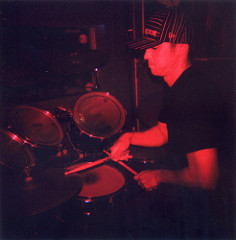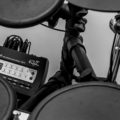In my opinion, the snare drum is the most compelling instrument in the genre of rock drums. When you listen to a good rock track, you will undoubtedly hear a high-quality and impactful snare drum.
Looking back, some of my favorite bands with strong and distinctive snare drum sounds include Genesis, who perfected the gated reverb effect famously used by Phil Collins. Van Halen also had a distinct snare drum sound, and one of my all-time favorites is Led Zeppelin.
How are these snare drum sounds achieved? They are produced through various factors such as the type of snare drum used, the choice of microphones for the top and bottom of the snare drum, the type of preamps used for those microphones, and the positioning of those microphones. There are additional recording and mixing Music Production - Improve Your Sound - The rise in popularity of work-from-home studios has significantly impacted the music production landscape in recent years, driven by the increasing availability of tools and technology. This growth has led to the emergence of mobile recording rigs, making it possible to record full band performances anywhere. While one might anticipate a wealth of high-quality music,… techniques that contribute to a great snare drum sound.
Let’s start with EQ. EQ for a snare drum varies for each track, so the following settings I’m providing are just general guidelines. It’s important to use your ears to fine-tune the EQ settings, as there are no fixed settings for EQ, compression, or other sound effects.
Try using a high-pass filter set below 120Hz as a starting point, and then adjust the filter downward for the desired cut. Boost between 150-300Hz to add thickness to the snare drum. Cut around 400-900Hz to reduce any boxiness in the low end. Boost between 5-7kHz for crispness. A boost between 9-15kHz can add brightness to the snare drum, but be careful not to interfere with the vocal range.
For a thick snare sound: Boost around 100Hz by +3dB (Q = 1.0), Cut around 2000Hz by -5dB (Q = 1.4), Boost around 8000Hz by +3dB (Q = 1.0). For a crisp and impactful snare drum sound: Cut around 200Hz by -3dB (Q = 1.0), Boost around 8000Hz by +3dB (Q = 1.0).
If you’re going to experiment with these settings, you will need a parametric EQ that allows you to adjust the Q setting.
Here are some general compression settings: Attack: 20ms to 60ms Release: 30ms to 100ms Threshold: This depends on the strength of the signal and can be set at -6dB or -16dB, depending on your desired dB level. Compression ratio: 2:1 to 6:1
Regarding pan settings for the snare drum, many people tend to pan it dead center. However, in reality, the snare is not centered. It is either slightly off to the left or right, depending on whether the drummer is left-handed or right-handed. If the drummer is right-handed, you should pan the snare drum slightly to the right, and if the drummer is left-handed, pan it slightly to the left. By “slightly,” I mean around 5 to 7 units, so it may read as +5 or -5, depending on the drummer’s handedness.
Manuel Marino is a seasoned Senior Producer, Music Composer, and Artist with over a decade of experience. He specializes in branded entertainment across various mediums, including video games, films, and advertising campaigns. With 20+ years as a game music composer, Manuel has worked on numerous platforms, creating diverse orchestral soundtracks. HIRE ME


 Manuel is a passionate, driven, and techsavvy AV technician,
Manuel is a passionate, driven, and techsavvy AV technician, 



